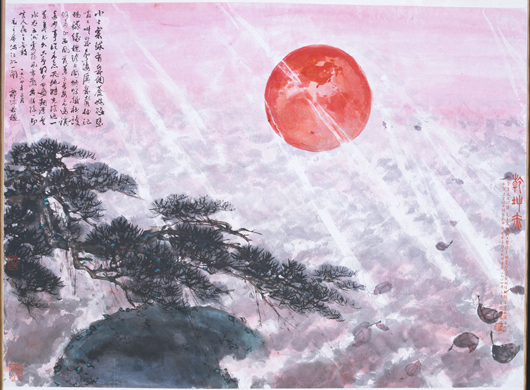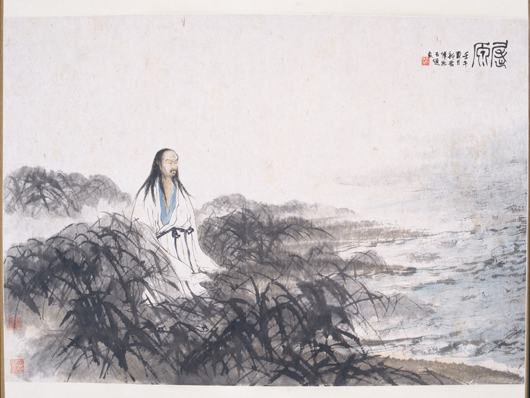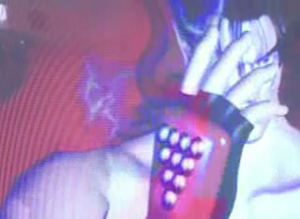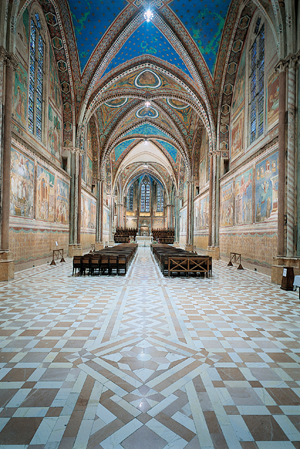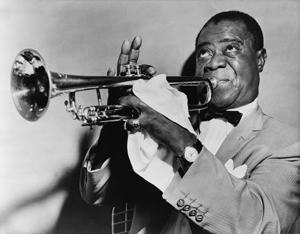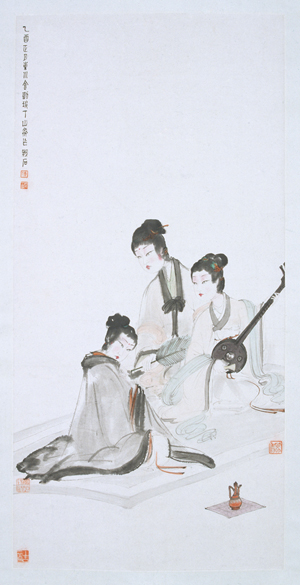
CLEVELAND – The Cleveland Museum of Art will showcase works of art by Fu Baoshi, a preeminent figure in 20th-century Chinese art, in a recently opened exhibition. “Chinese Art in an Age of Revolution: Fu Baoshi (1904-1965)” is the first retrospective in the Western Hemisphere of the artist who revolutionized the tradition of Chinese ink painting.
The exhibition will reveal the process of the artist’s self-discovery and personal struggle, as well as the complexity of art and politics in Republican and Communist China. Featuring 90 works on loan from the Nanjing Museum, one of the oldest and most comprehensive museums in China, this is the first collaboration between the Cleveland Museum of Art and the Nanjing Museum. The exhibition will be on view at the Cleveland Museum of Art through Jan. 8. It markes the first time this work will be viewed outside China. It will then travel to the Metropolitan Museum of Art in New York from Jan. 30 through April 29.
“Given the strength of the Cleveland Museum of Art’s Asian collection and scholarship, we’re particularly excited to be contributing to the study and exhibition of one of China’s most important modern artists,” says David Franklin, director of the Cleveland Museum of Art. “Additionally, the project highlights our close relationship with the Nanjing Museum and further attests to our desire to create exhibitions of true originality.”
“Chinese Art in an Age of Revolution: Fu Baoshi (1904-1965)” considers the full scope of Fu Baoshi’s artistic career from the 1920s to 1965 within the art—historical, social, political and cultural contexts. From traditional-style landscape and figure paintings demonstrating Fu’s artistic excellence and profundity, to political artwork manifesting state ideology under Chairman Mao Tse-tung, the wide variety of work that will be exhibited demonstrates the artist’s search for an artistic language capable of speaking for both self and the nation. Fu Baoshi’s art provides an important insight into the use of native tradition to present modern Chinese ink painting as a discipline distinct from Western and international socialist art of the time. It was symbolic of the Chinese view of their place and national identity in the world during the 20th century.
“Fu Baoshi’s art represents the quest for beauty even in the most difficult circumstances,” says Anita Chung, PhD, curator of Chinese art for the Cleveland Museum of Art. “It has an aesthetic appeal that transcends history and distance in time and space, and, in this respect, the exhibition concerns aesthetics as much as context in light of the nationalistic sentiment and political ideology that shaped Fu’s expression in an age of crisis.”
The exhibition will focus on specific aspects of modern Chinese art during revolutionary change, including the reinvention of a national style of Chinese painting (guohua), the role of Japan in China’s modern art discourses and the new meanings of ink painting in the People’s Republic of China. It will trace the development and transformation of Fu’s paintings at different stages of his life as he embraced Chinese art history and Eastern aesthetics with his early experiences in Japan, developed individual styles in his 1940s landscapes and figure paintings, transformed ink and brush in service to the masses after the Communist victories in 1949, and captured China’s territories with patriotic conviction in his late landscapes of the 1950s and 1960s.
Highlights of Chinese Art in an Age of Revolution: Fu Baoshi (1904-1965) include:
- Qu Yuan, 1942. Fu Baoshi created this compelling image of the ancient poet-statesman Qu Yuan, emphasizing his psychological suffering before his suicide in the Miluo River. The image sheds light on the grievances and pathos of China’s modern intellectuals in the face of war and political corruption.
- Plucking the Yuan, 1945. Beauty embodying refined elegance and music invoking the feeling of ecstasy, this painting portrays three women using music for inner cultivation and self-improvement. It affirms certain human values and cultural ideals in an eventful age.
- Whispering Rain at Dusk, 1945. This work represents Fu Baoshi’s signature style in landscape depiction and shows his sensitive use of the brush, ink, color, light and atmosphere to depict a stormy scene during World War II.
- Gottwaldov, 1957. A vivid image of the smoggy, industrial city of Gottwaldov (present day Zlìn) in the Czech Republic, painted during his official visit to Eastern Europe, Fu’s portrayal is characterized by a dark mystery, which makes it a powerful statement on modern industrialization, subject to the viewer’s interpretation.
- Swimming: Poem of Mao Zedong, 1958. The subject of this painting is Mao swimming across the Yangzi River. He is depicted floating in the river, with only his head visible above the surface of the water. Mao swam across the river many times, in which he found the inspiration for his plan of taming the Yangzi with human structures, as laid out in his 1956 poem “Swimming.”
- Heavenly Lake and Flying Waterfall, 1961. This strikingly simple and abstract composition effectively captures the awe-inspiring beauty of Changbai Falls, which flows from a river outlet of the lake on top of Changbai Mountain in Jilin Province, on the border with North Korea. Glittering in the light, the silvery white water stands out against the deep, black ink washes creating the precipitous cliffs.
- Heaven and Earth Glowing Red, 1964. The red globe of the earth floats in rose-colored air. Natural phenomena, including a pine tree, rock, falling leaves, ocean, wind, mist and lightning, are incorporated in an abstract design for romanticizing Chinese communist revolution. This is Fu’s interpretation of the political abstractions of the time based on Mao’s poetry. It fulfills the political requirement to direct art in the service of the Party and the masses.
The Nanjing Museum, which is loaning the works, currently houses the most significant collection of Fu Baoshi’s art that escaped destruction during the Great Proletarian Cultural Revolution (1966-1976), because they were preserved by both the Fu family and the museum after the artist’s death in 1965.
“The Nanjing Museum is delighted to collaborate with the Cleveland Museum of Art in exhibiting across the Pacific the finest of Fu’s works from our museum’s collection,” says Director Gong Liang of the Nanjing Museum. “The American audience will not only experience the beauty of Chinese painting but also come to understand the extraordinary artistic sentiments of this modern Chinese master.”
Tickets for Chinese Art in an Age of Revolution: Fu Baoshi (1904-1965) are $8 for adults, $6 for seniors and college students and $4 for children ages 6 to 17. The exhibition is free for museum members.
The exhibition will be accompanied by a catalog that incorporates the most recent scholarship on modern Chinese art and provides in-depth analysis of Fu Baoshi’s art, placing his art and career in the context of modern Chinese history. The museum is planning complementary programming including lectures, Chinese music performances, and films. More programming information is available at www.ClevelandArt.org .
ADDITIONAL IMAGES OF NOTE
